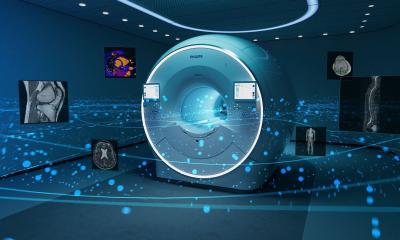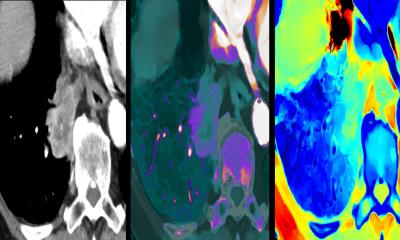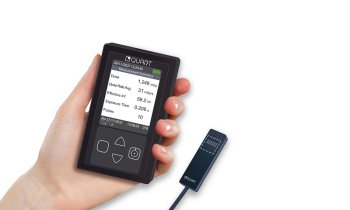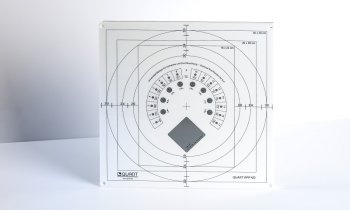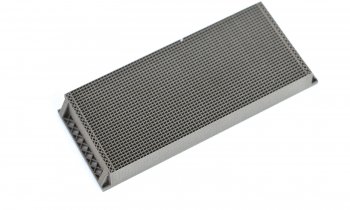Enhancement in minimally-invasive treatment of heart rhythm disorders
Electrophysiologists reduce X-ray radiation dose by 42% in minimally-invasive electrophysiology procedures while maintaining image quality with Philips’ innovative live image guidance system AlluraClarity
The Catharina Hospital (Eindhoven, the Netherlands) and Royal Philips (NYSE: PHG, AEX: PHIA) today announced the results of a clinical study involving the treatment of 136 patients with complex heart rhythm disorders such as atrial fibrillation (AF).

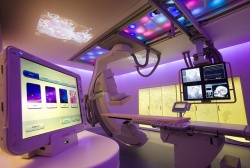
Using Philips’ innovative AlluraClarity system with ClarityIQ technology, developed by Philips for use in image-guided catheter-based interventions, electrophysiologists at the Catharina Hospital were able to reduce patients' exposure to X-ray radiation during the procedure by 42% while maintaining image quality. At the same time, the electrophysiologist’s exposure to X-ray radiation was reduced by 50% to only 3 μSv per procedure – approximately one thousandth of the average natural background radiation dose (2 - 3 mSv) that most people in the Netherlands are exposed to each year.
By reducing X-ray exposure to both the patient and the electrophysiologist performing the procedure, while maintaining the image quality needed for electrophysiological interventions, Philips’ new ClarityIQ X-ray technology will further improve these procedures.
Heart rhythm disorders - so-called arrhythmias - are caused by disturbances in the normal electrical activation of the heart, and can lead to more serious conditions such as heart failure or stroke. Many arrhythmias can be treated using minimally-invasive electrophysiology (EP) procedures, in which catheters are inserted into the patient's heart and sections of heart tissue are ablated to prevent the propagation of abnormal electrical signals in the heart. Interventional X-ray systems are generally used as the standard live imaging technology for guiding such procedures.
“With Philips' ClarityIQ technology we can further enhance image-guided catheter ablation therapy for complex heart rhythm disorders,” concludes cardiologist Lukas Dekker of the Heart Center at Catharina Hospital, the largest heart center in the Netherlands. “The number of people with arrhythmias eligible for catheter ablation therapy is increasing sharply, so treating the condition needs to be made simpler and even safer. In addition to minimizing the risk to patients, reducing X-ray dosage is also an important step for medical personnel, because many of them are exposed to X-ray radiation on a daily basis.”
More than 6 million people in Europe, 2.6 million people in the US, and 8 million people in China currently suffer from some form of arrhythmia. Over the past 20 years, the number of people admitted to hospital with arrhythmias has increased by 66%, with the total number of patients predicted to double over the next few decades as a result of the ageing population.
During the past decade, catheter ablation of complex arrhythmias has evolved rapidly from an investigational procedure to its current status as a commonly performed ablation procedure in major hospitals throughout the world. Catheter ablation procedures, which are increasing with a double-digit growth rate, continue to become faster and safer as a result of advances in medicine, the establishment of specialist treatment centers such as the Catharina Hospital, and improvements in medical technology.
“Live images are essential during catheter ablation therapy for heart rhythm disorders because of the complex anatomy in the areas of the heart that need to be ablated,” says Ronald Tabaksblat, General Manager of Interventional X-ray at Philips Healthcare. “Together with our clinical partners, we have developed the Clarity IQ technology, and overcome the technical hurdle of combining high image quality with low X-ray dose for a broad range of X-ray guided procedures. With the anticipated increase in the number of EP procedures, reducing X-ray dose, while maintaining image quality is very important for both patients and clinicians.”
Philips plays a leading role in the field of minimally-invasive interventions with the development of complete cardiac catheterization rooms containing advanced facilities for investigating and treating arrhythmias. Philips has also developed sophisticated tools such as its innovative EP navigator, which produces 3D images of a patient's heart and visualizes the position of the catheters in real time.
Other application areas where Philips’ AlluraClarity interventional X-ray system with ClarityIQ technology has been shown to reduce X-ray doses, while maintaining image quality, are coronary angiography procedures (50% X-ray dose reduction) and neurological interventions (73% X-ray dose reduction).
Please find below a link to a video animation displaying the procedure.
28.08.2013
- cardiology (770)
- cardiovascular diseases (727)
- catheter (124)
- economy (1046)
- medical technology (1543)
- radiation protection (188)
- studies (1053)
- X-ray (295)



